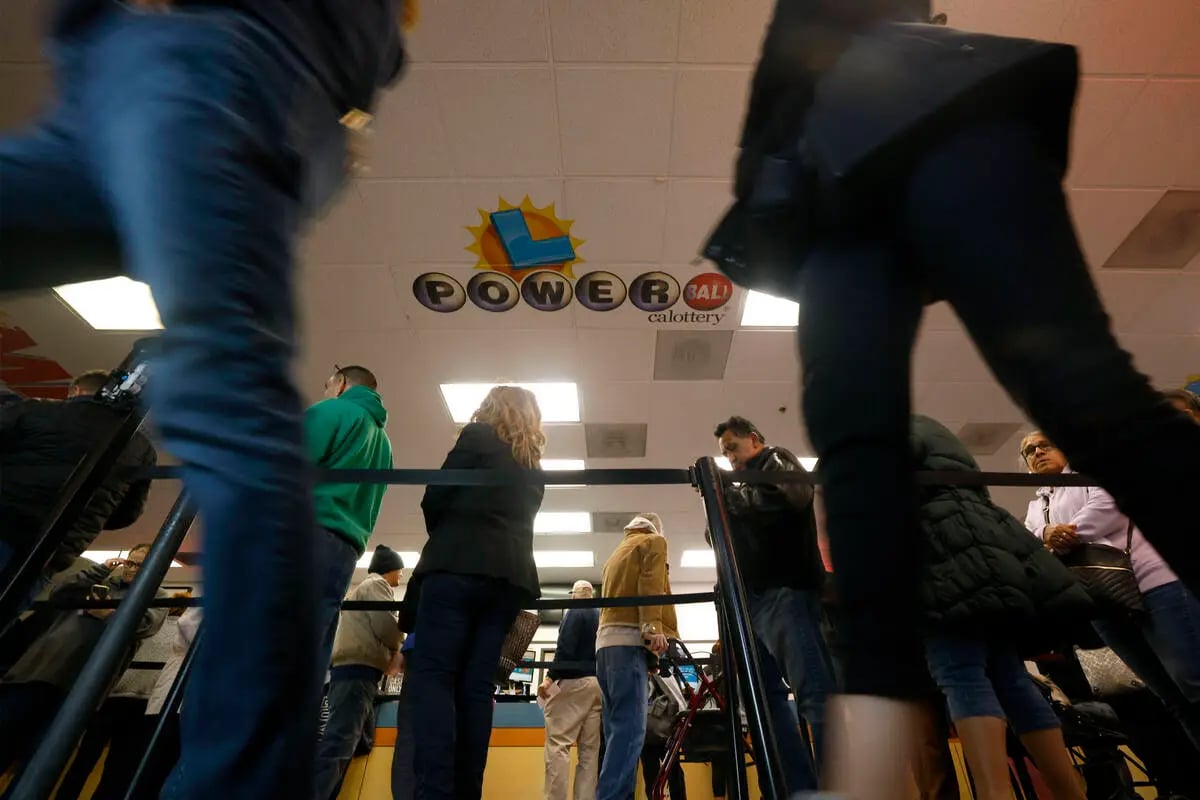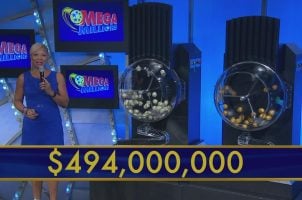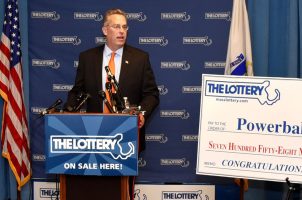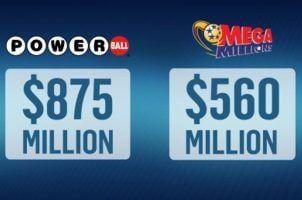Powerball Jackpot Soars to $1.5B, Inflation and Feds Propelling Lottery Prize
Posted on: November 3, 2022, 09:40h.
Last updated on: November 10, 2022, 04:16h.
The Powerball jackpot Wednesday night managed to dodge players for the 39th drawing in a row.

None of the more than 150 million tickets sold for Wednesday night’s drawing matched the five white ball numbers 2-11-22-35-60 and red Powerball number 23. The Powerball jackpot rolls over for the interstate lottery game’s next drawing this Saturday, November 5.
The estimated jackpot for this weekend’s drawing is $1.5 billion, with the cash option at $745.9 million. At $1.5 billion, the Powerball prize would be the second-largest jackpot in Powerball history and the third-largest prize ever offered in US lottery history.
The only time a richer lottery jackpot has been on the line occurred in January 2016, when three winners shared a $1.586 billion Powerball haul, and in October 2018, when one winner claimed a $1.537 billion Mega Millions jackpot.
Inflation Elevates Jackpot
The Powerball frenzy is pushing the jackpot toward the all-time US lottery record. The game is also closing in on its longest jackpot-less streak.
Powerball’s current drawing record with no jackpot winner stands at 41. The mark was set just last year in the buildup to a Californian winning a $699.8 million prize on the 41st drawing on Oct. 4, 2021.
So, why is the jackpot amount growing faster this year? There are a couple of reasons.
Americans have watched their retirement and savings accounts diminish significantly over the past year, prompting some to test their luck with a $2 lottery play in hopes of changing their recent financial fortunes. The Dow Jones Industrial Average is down 11.5% over the past 12 months, and record inflation is lessening the purchasing power of the funds Americans do have.
But a bigger culprit for the jackpot value skyrocketing is how the federal government is responding to the inflation surge.
The Federal Reserve Wednesday announced a fourth consecutive three-quarter point interest hike to take rates to their highest level since January 2008. That’s why the 2022 Powerball jackpot has quickly outpaced last fall’s jackpot in terms of the value of the full jackpot distributed through a 30-year annuity.
The Multi-State Lottery Association (MUSL), which operates Powerball, advertises its jackpot based on the total value of the 30-year allocation. MUSL invests the cash for the winner in a portfolio of Treasury bonds. With interest rates for those investment vehicles continuing to increase, the value of the Powerball jackpot is swelling faster than it did a year ago.
“While some businesses might suffer from rising interest rates, for lottery games that have annuity for the prizes, it is more of a tailwind,” Bret Toyne, MUSL executive director, told The Wall Street Journal.
Determining Payouts
Powerball winners have the all-important choice of deciding whether to take the one-time cash option or the full value of the jackpot over 30 years. Both options are subject to an effective federal tax of 37%.
Major lottery winners have traditionally opted for the cash option. Still, with interest rates soaring in what is the Feds’ effort to curb inflation, the decision isn’t perhaps as easy as it once was.
Toyne told the WSJ that of each $2 Powerball ticket, 34% goes toward the jackpot, and 16% is directed to cover second-tier prizes. The remaining 50% covers operating costs, commissions, and the nonprofit programs the charities benefit.
If the winner takes the cash option, they receive the jackpot cash after federal taxes are withdrawn. If they choose the annuity, they receive the first 30 annual payments immediately. The money to fund the 29 remaining payments would then be invested in federal interest-bearing bonds.
Related News Articles
Powerball Climbs to Third-Largest Jackpot in Game History
Most Popular
Las Vegas Overstated F1 Race’s Vegas Impact — Report
Mega Millions Reportedly Mulling Substantial Ticket Price Increase
NoMad Hotel to Check Out of Park MGM on Las Vegas Strip
Most Commented
-
End of the Line for Las Vegas Monorail
— April 5, 2024 — 90 Comments -
Mega Millions Reportedly Mulling Substantial Ticket Price Increase
— April 16, 2024 — 8 Comments -
Long Island Casino Opponents Love New York Licensing Delays
— March 27, 2024 — 5 Comments
















No comments yet